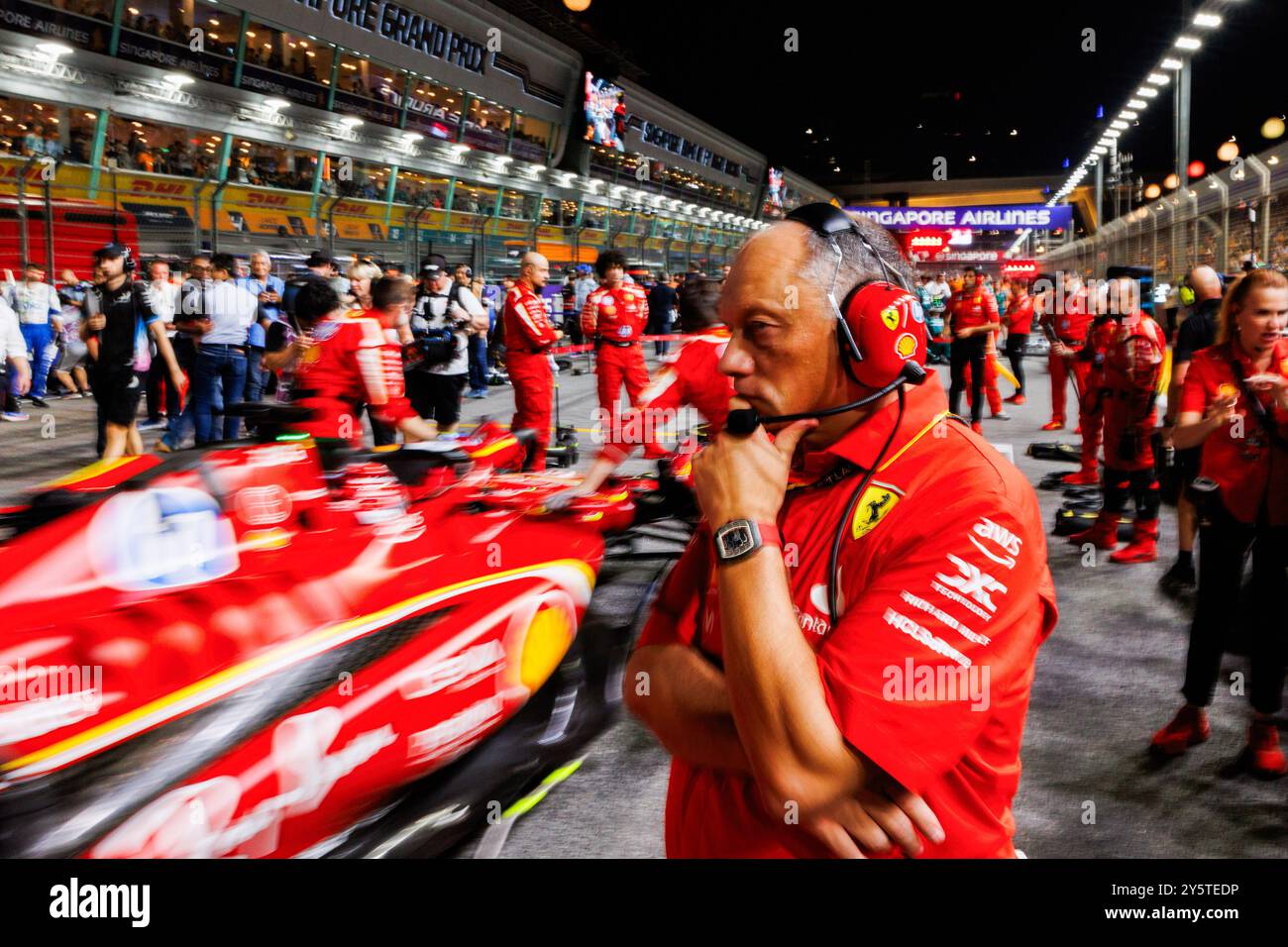Ferrari’s 2025 Formula 1 season has become a storm of technical and sporting scrutiny, with the team’s future at Maranello hanging in a delicate balance. After a chaotic first half of the season marked by unexpected limitations from their new SF25 car and mounting pressure on team principal Fred Vasseur, the upcoming Austrian Grand Prix at the Red Bull Ring represents a critical juncture. The team is set to introduce a significant upgrade package that could either stabilize their campaign or further expose the challenges lying beneath the surface.
The SF25’s Technical Woes: An Unexpected Handicap
Since the preseason tests and the opening race in Australia, it became painfully clear that the SF25 was not the dominant car Ferrari hoped for. The single-seater struggled to operate effectively within the ideal operational window required to maximize aerodynamic load — a core factor in performance, especially around fast corners and high-speed sections.
Technical director Loïc Serra and chief engineer Diego Tandi found themselves forced to rewrite development plans almost from scratch. What was initially envisioned as a cutting-edge design turned out to have fundamental flaws, most notably related to the rear suspension. The rear end of the SF25 was unable to maintain aerodynamic stability and coherence, resulting in an unpredictable car that struggled to suit driver Lewis Hamilton’s style, who joined the team this year with high hopes.

The Austrian Upgrade: More Than Just a Minor Fix
The new upgrade arriving at the Red Bull Ring is not simply a minor tweak — it is a fundamental overhaul of the SF25’s aerodynamic surface. Designed to address the core issues identified in the first races, this package is the result of months of painstaking analysis, engineering recalibration, and strategic financial decisions back at Maranello.
Originally planned for Silverstone, the new aerodynamic surface has been accelerated to debut in Austria to try to halt the team’s downward trajectory. While expectations are cautiously tempered — no one expects Ferrari to immediately return to race-winning form — even a small advantage on a compact and demanding circuit like the Red Bull Ring could prove pivotal in the tightly packed midfield battle.
The upgrade is a testament to Ferrari’s commitment to evolving the SF25 mid-season, rather than abandoning the project in favor of a 2026 reset. Yet, this decision carries risks. The upgrade’s late arrival reflects the time required to properly diagnose and reorient the car’s development direction — a process that inevitably delayed meaningful improvements earlier in the year.
Internal Pressure and Leadership Under Scrutiny
Fred Vasseur, Ferrari’s team principal, has become the focal point of media attention and internal debate. The post-Canada media frenzy has cast a spotlight on his leadership, with many questioning whether he is the right person to steer the team out of the current crisis.
Despite the criticism, Vasseur has maintained a firm belief in the SF25’s potential, insisting that the car has untapped promise even if it has yet to fully deliver. His stance is supported publicly by Lewis Hamilton, who recognizes the car’s flaws but also acknowledges the team’s effort to recover.
However, Hamilton’s support comes with caveats. The seven-time world champion has admitted to moments of serious doubt, even contemplating whether it might be better to “abandon” the 2025 campaign to focus entirely on the 2026 car — a project already underway at Ferrari’s Fiorano wind tunnel. Since mid-June, the SF25 has not undergone any wind tunnel testing, with all resources shifted to the upcoming generation 678 car that will conform to new regulations next season.

A Season of Transition and Hope for Rebuilding
The reality for Ferrari in 2025 is clear: the drivers’ championship is out of reach. The team’s realistic aim now is to secure second place in the constructors’ championship, gathering a few victories along the way to restore some dignity and momentum.
Ferrari’s mentality is rooted in resilience. After a disappointing Monaco Grand Prix, they are doubling down on the philosophy of gradual improvement rather than radical change. The Austrian upgrade is a crucial first step in reopening the door to competitiveness, not an instant fix.
Moreover, Ferrari’s continuous testing at Fiorano, including recent Pirelli wet tire sessions and front wing aerodynamic evaluations, shows the team’s commitment to refining performance both for the current season and the future.
What Lies Ahead?
The weeks following Austria will be pivotal in defining the trajectory of Ferrari’s 2025 season. Will the Red Bull Ring upgrade strengthen Fred Vasseur’s position within the team? Can it convince Lewis Hamilton that Ferrari is genuinely on the path to reclaiming the front of the grid? And most importantly, will it finally bring the Scuderia back to the top step of the podium — the place where their passionate fans expect to see them?
While the uncertainty remains, Ferrari’s story this season has been one of technical challenge, leadership under pressure, and cautious optimism. The team’s ability to navigate these waters and build on the Austrian upgrade will be closely watched by the F1 community.
Full Video:





